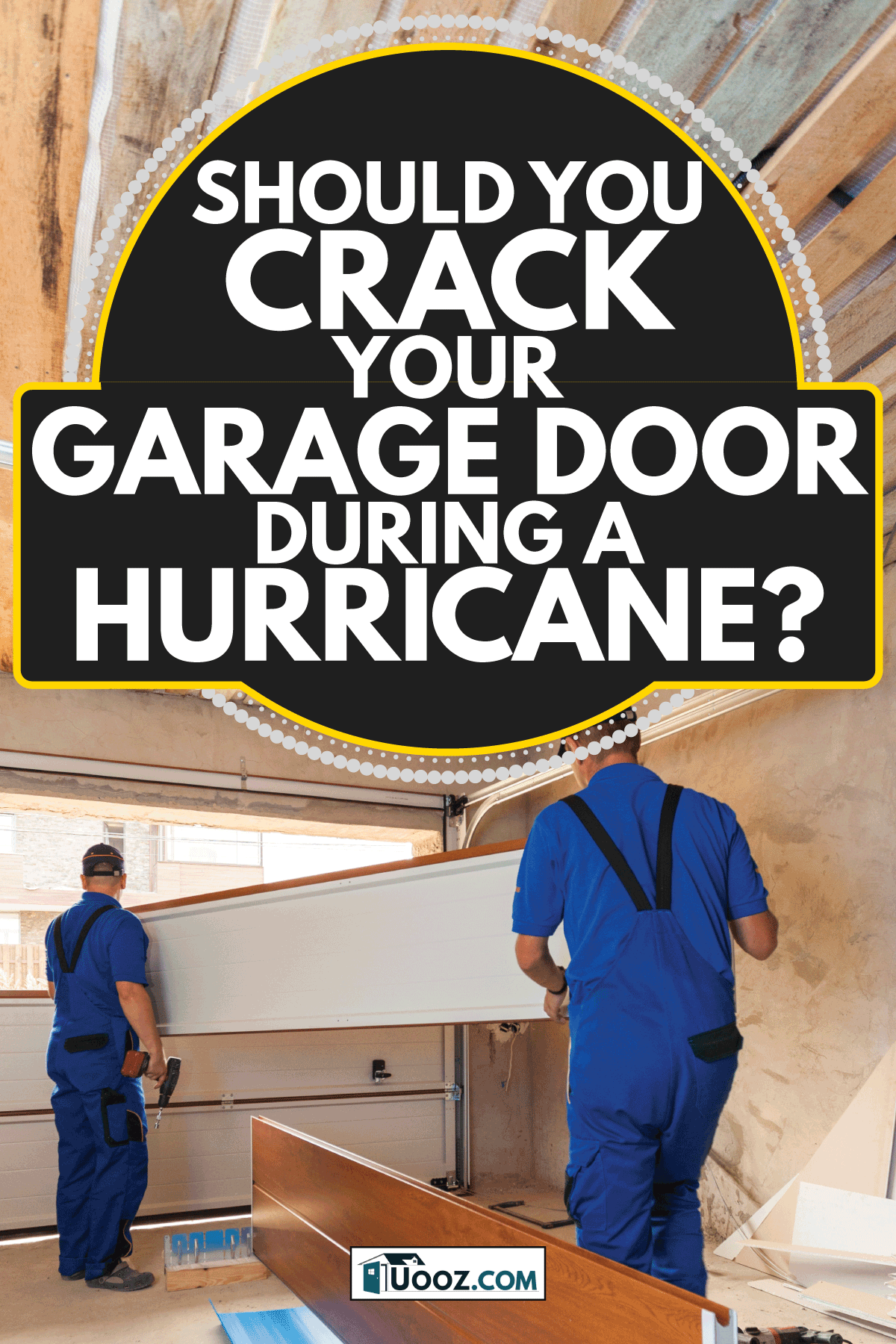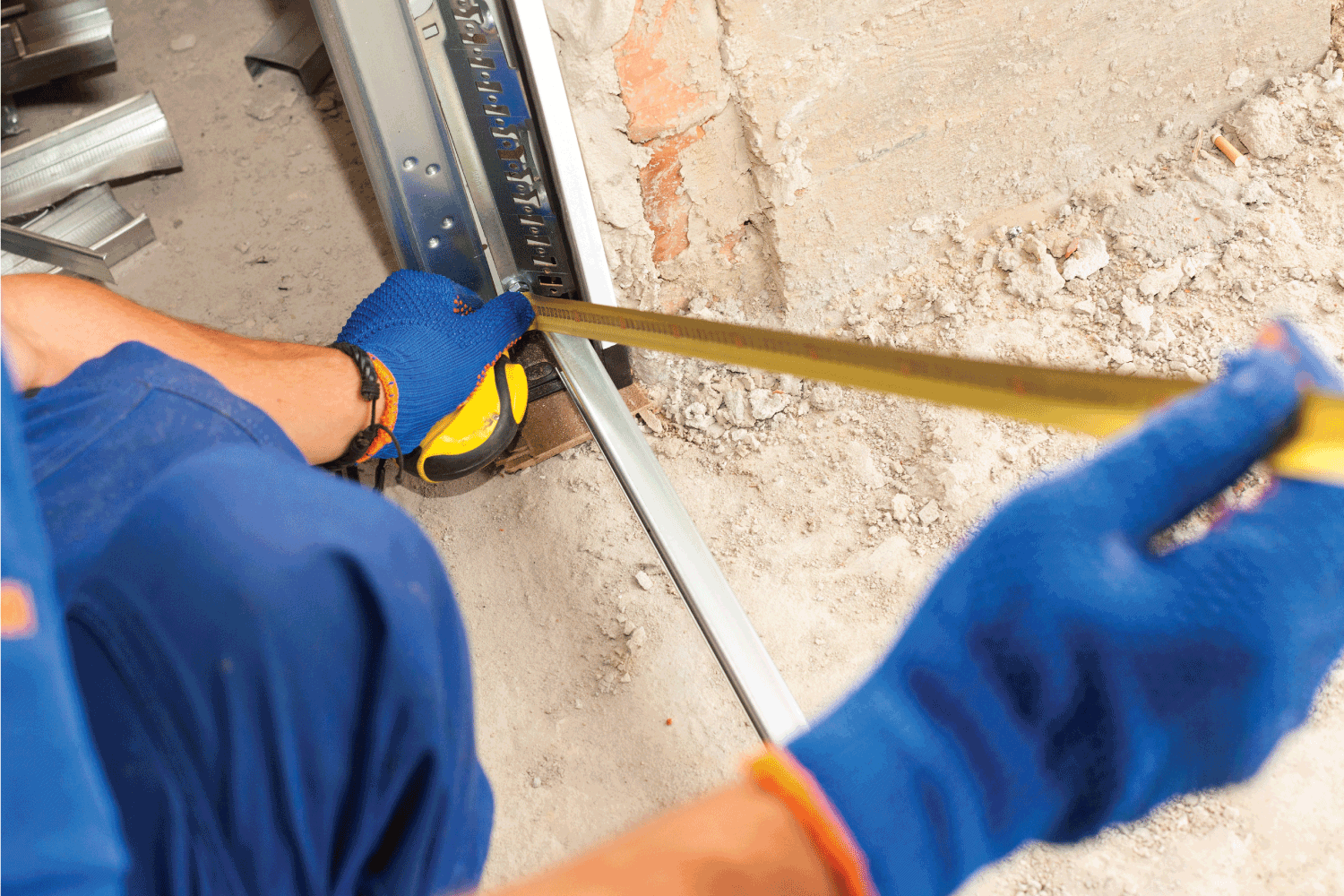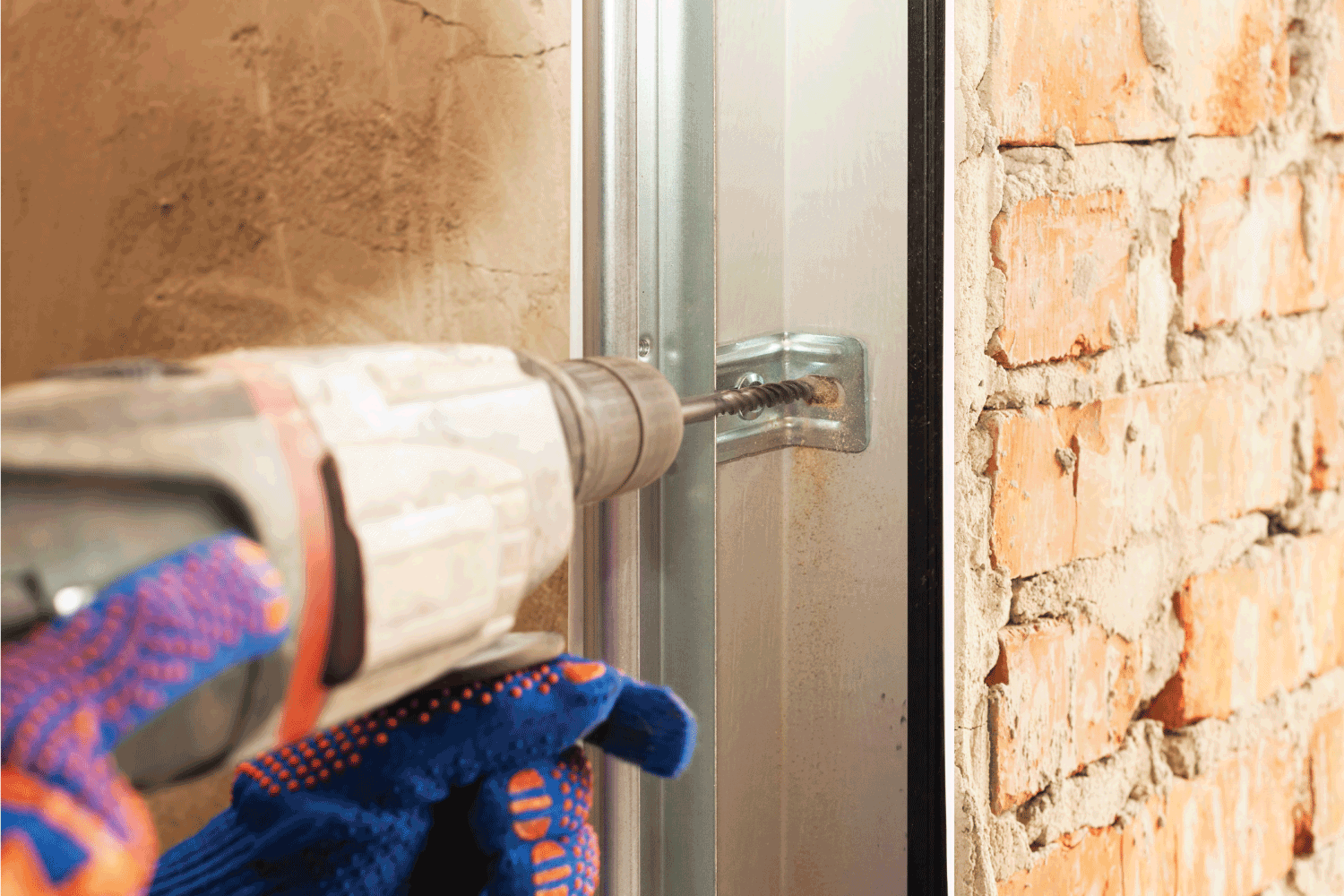If your home is located somewhere that's prone to severe storms, hurricane proofing is essential. Many may not be aware, but the garage is the part of your house that's most susceptible to damage. The raging winds will try to pry open the garage doors, which could rip apart the roof if successful. If that's the case, should you just leave it cracked? After researching the best practices to protect your garage door, we've found the answer.
The garage door should be completely closed, not allowing any wind to enter inside. Leaving the door cracked could make your home vulnerable to damage due to pressure fluctuations from the wind and potentially flying debris.
Continue reading to better understand the importance of leaving your garage door completely shut during a hurricane.

Why You Shouldn't Crack Your Garage Door
It may come as a surprise to some but the garage door is the weakest barrier of your whole house. It's the most likely to fail against the harsh conditions, putting the rest of your home at risk if not secured properly. The strong winds press the exterior side and potentially force it open.
Leaving just a tiny crack in the garage door makes it easier for the hurricane winds to damage your home. If the wind gets in or out through the garage door, it'll build internal pressure. That pressure will create a vacuum that forces pressure on the roof should the garage door fail. This also allows debris to fly through other areas in the house, potentially causing more damage.
How Do I Protect My Garage Door During a Hurricane?
Many homeowners have no idea how to keep their garage door protected from hurricanes. That's why we've prepared a few tips that you can try. Use the ones that best suit your situation if you can't use them all.

Replace Your Current Garage Doors With Wind-resistant Ones
We know this is the most expensive option, and we're listing it first. But if you live somewhere where hurricanes happen often, this is a good investment. If you live in California, Florida, Nevada, Kansas, Utah, or Missouri, you're required to have a wind-resistant garage door. It's also wise to upgrade if you've had your current garage door for a long time; age is a huge sign you need a new one.
For a garage door to be considered wind-resistant in hurricane-prone regions, the door needs to be able to withstand the strength of winds of 150 MPH. When shopping for better garage doors, look for one of these two ratings: impact resistance and wind resistance. Impact-resistant garage doors are made with fiberglass or steel veneer to protect against the debris hurled against the door. Wind-resistant or hurricane-proof garage doors feature a strong steel track system and twist-resistant framework.
Depending on where you live, the garage door may need to meet your city's building codes. Make sure you check the manufacturer's specifications to ensure it meets code requirements.
Install Garage Door Bracing Kits
Garage doors are secured by tracks or hinges. Neither of these is strong enough to withstand the strength of a hurricane. You'll want to purchase a bracing kit.
A bracing kit helps to reinforce your garage door to prevent it from falling. When installed, its job is to anchor the garage door to the walls, floor, and hinges/tracks. Hurricane-resistant brace kit prices range, but prepare to spend around $500.
Here's a two-pack brace from Storm Supply Depot that you can view on Amazon.
Installation is pretty easy; you just need a hammer, screws, nuts and bolts, and possibly a masonry bit. Once properly installed, the brace easily removes and reattaches. Make sure to remove the brace whenever it's not needed. Failure to do so will result in damage when trying to open the garage door.
Use Panels and Netting
If your garage doors come with small windows, you'll want to use panels on the exterior. This will add a layer of protection for the garage door that blocks debris from shattering your windows. You can use panels and netting on the exterior and the interior, but you'd only need one for the front if you already have a brace installed.
Simple Steps
There are two things you can do that don't require hardly any effort. It doesn't completely add strength to your door, but it keeps it from flying open. The first is to simply lock it manually. Most garage doors have manual locks on both sides. Do this in tandem with the next thing.
That second thing is to disengage the garage door from the track. Should the winds be strong enough to open the garage door, the garage door opener will be damaged. Doing this normally makes the door easier to open, which is why we suggest doing this and manually locking the door.
Are Garage Doors Hurricane Proof?
Many modern building codes require garage doors to have a certain wind rating. But it's hard to tell if a door is hurricane-proof or not. The one way to check is to look for a label. This label will include information such as its ratings for wind pressure, listed in positive and negative PSF, or pounds per square foot. It may also say how much wind speed it's designed to resist.
Without this label, you won't be able to tell if it's hurricane proof or not. According to Disaster Safety, an IHBS survey stated that up to 90% of garage doors away from coastlines are improperly labeled or not labeled at all. In this instance, you'll want to use our tips to strengthen your garage door just in case. Better safe than sorry!
How Much Wind Can a Garage Door Withstand?
Garage doors that are manufactured for wind resistance will often have a rating. Doors with this rating will resist wind strengths from 85 to 150 MPH. There are some garage doors built to withstand up to 200 MPH; that's enough to take on a category 5 hurricane.
Older garage doors won't hold well against wind speeds of those levels. Installing newer reinforcing tools still won't protect the integrity of the door. It may be to your benefit to use strong panels and netting if your garage door is older.
How Can I Strengthen my Garage Door?

If you live close to a coastline, it's useful to use as many garage door strengthening techniques as possible for the most protection. Here are some tips to strengthen your garage door:
- Panel and net your garage door from both sides, if possible: doing so gives the door another layer of protection and a minor boost in wind resistance. You may have to drill small holes through the door to latch panels to both sides; just seal them up after installation.
- Invest in a high-quality brace: pay attention to its material. Make sure it's super strong and durable. Check reviews from other buyers to get a feel for its longevity.
- Inspect your garage door tracks: if your tracks are weak, your wind protection will also be weak no matter what strengthening improvements you make. Make sure you have tracks that are at least 14-gauge weight.
In Closing
Living somewhere that's prone to strong, damaging winds can be tough. If you follow our tips, your garage won't be part of your troubles. You may even get a good deal on insurance by hurricane-proofing your home. Here are some other articles that may help in further weather protecting your home:

